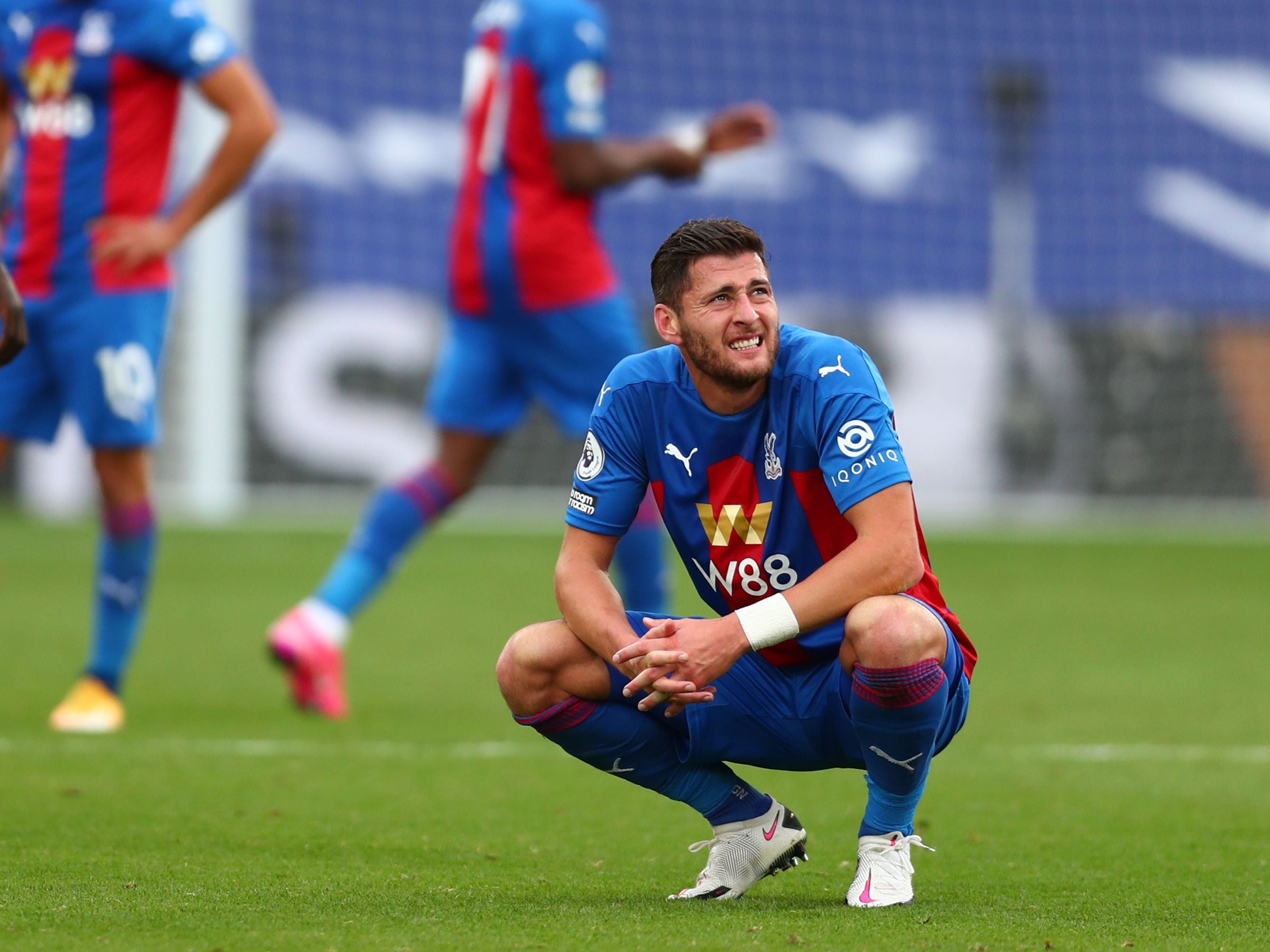The Independent's journalism is supported by our readers. When you purchase through links on our site, we may earn commission.
Handball law: Explaining the new rule causing chaos in the 2020-21 Premier League
The latest batch of incidents have caused fury from managers, fans and pundits alike

Almost like clockwork, outrage sparked across social media after Everton were awarded a rather contentious penalty on Saturday afternoon – with anger directed towards VAR and the handball rule.
After a seemingly harsh call against Crystal Palace defender Joel Ward, Richarlison scored a penalty to restore Everton’s lead.
Ward, who appeared to be standing in a natural position, conceded the penalty when Lucas Digne headed the ball down and it struck Ward’s arm. It appeared accidental and hardly impeded Everton’s attack, yet Palace found themselves behind after the referee’s intervention.
Matthew Upson expressed his anger on Radio 5 Live while Gary Lineker sent out a string of tweets, so let’s look at how the handball rule has changed and why.
Similar reaction occurred after Eric Dier was penalised late on, allowing Newcastle to score a stoppage-time penalty and take a point against Tottenham.
What’s changed?
Prior to the beginning of the 2020/21 Premier League season, the handball laws were amended following several goals being disallowed rather harshly thanks to a new rule instated the year before.
That ruling was introduced ahead of 19/20, whereby referees would remove the degree of intent surrounding an action such as if the ball hit an arm in an unnatural position. This is important.
This was scrapped for the new season and replaced by a new set of clarifications.
Ifab’s instruction
The International Football Association Board (Ifab) is the body that determines the laws of the game of football. For clarity, their ruling states:
For the purposes of determining handball offences, the upper boundary of the arm is in line with the bottom of the armpit.
The bottom of the armpit is the ruling, not the bottom of the t-shirt sleeve or other such interpretations made by some broadcasters.
Beyond that, there are different sub-rules for different scenarios. Deliberate handball is still penalised, regardless of where it is on the pitch, while a goal going in off an arm is also ruled out, deliberate or not.
One amendment to the rule from last year was ensuring that an accidental handball will only be punished if it occurs “immediately” before a goal was scored. If play continues for some time after this, accidental handball will not be penalised.
If the ball strikes a player who has made their body “unnaturally bigger”, then they will be punished; this is a change from 19/20 when it was only “usually an offence”.
Ifab deems that an arm above shoulder height is rarely, if ever, a “natural” position, with the only exception coming when a player is falling to the ground.
The body also stated that extra leeway will be granted in regards to ricocheted handballs, or if the player in question cannot see the ball.
Finally, Ifab include a note on handling with the above criteria involved after a rival has diverted the ball:
The above offences apply even if the ball touches a player’s hand/arm directly from the head or body (including the foot) of another player who is close.
Ifab further note that it is not an offence for a player to handle “directly from the player’s own head or body”, “directly from the head or body (including the foot) of another player who is close” or “when a player falls and the hand/arm is between the body and the ground to support the body” - as long as they do not contravene the aforementioned rules, such as making the body unnaturally bigger.
Premier League interpretation
The Premier League – and crucially, the FA – seems to interpret the rule slightly differently and far more harshly regarding defenders.
Ahead of the new season, the Premier League statement focused far more on the “bottom of the armpit” aspect.
There is no specific ruling in Ifab’s laws about a player not being able to see the ball’s direction before it hits the arm, but Premier League broadcaster BT Sport clarified ahead of the 20/21 campaign that this would not necessarily be penalised in the English top-flight:
Extra leeway will be permitted when it comes to ricocheted handballs when it comes off a nearby player or if they cannot see the ball
This means that in the case of Eric Dier at the weekend, for example, although he could not see the ball travelling toward him as it was headed from behind, the referee will have taken the height of his arm (above the shoulder) and the fact it was held wide while jumping (making the body bigger) into account when deciding to award the penalty.
As such, it appears that accidental handball for a defensive player will not be tolerated in many circumstances, unless the arms are held firmly by their sides.
Attacking players simply need to strike the so-called “red zone” below the armpit and, with VAR in place to constantly monitor and adjudicate, they could be awarded a penalty.
The rules are being heavily scrutinised as they seem to benefit attacking players, despite being disguised as an aid to defenders.
The 19/20 unnatural position ruling, particularly in the instance of Joel Ward, has clearly been scrapped in favour of the new amendment. It is all about the bottom of the armpit.

Join our commenting forum
Join thought-provoking conversations, follow other Independent readers and see their replies
Comments